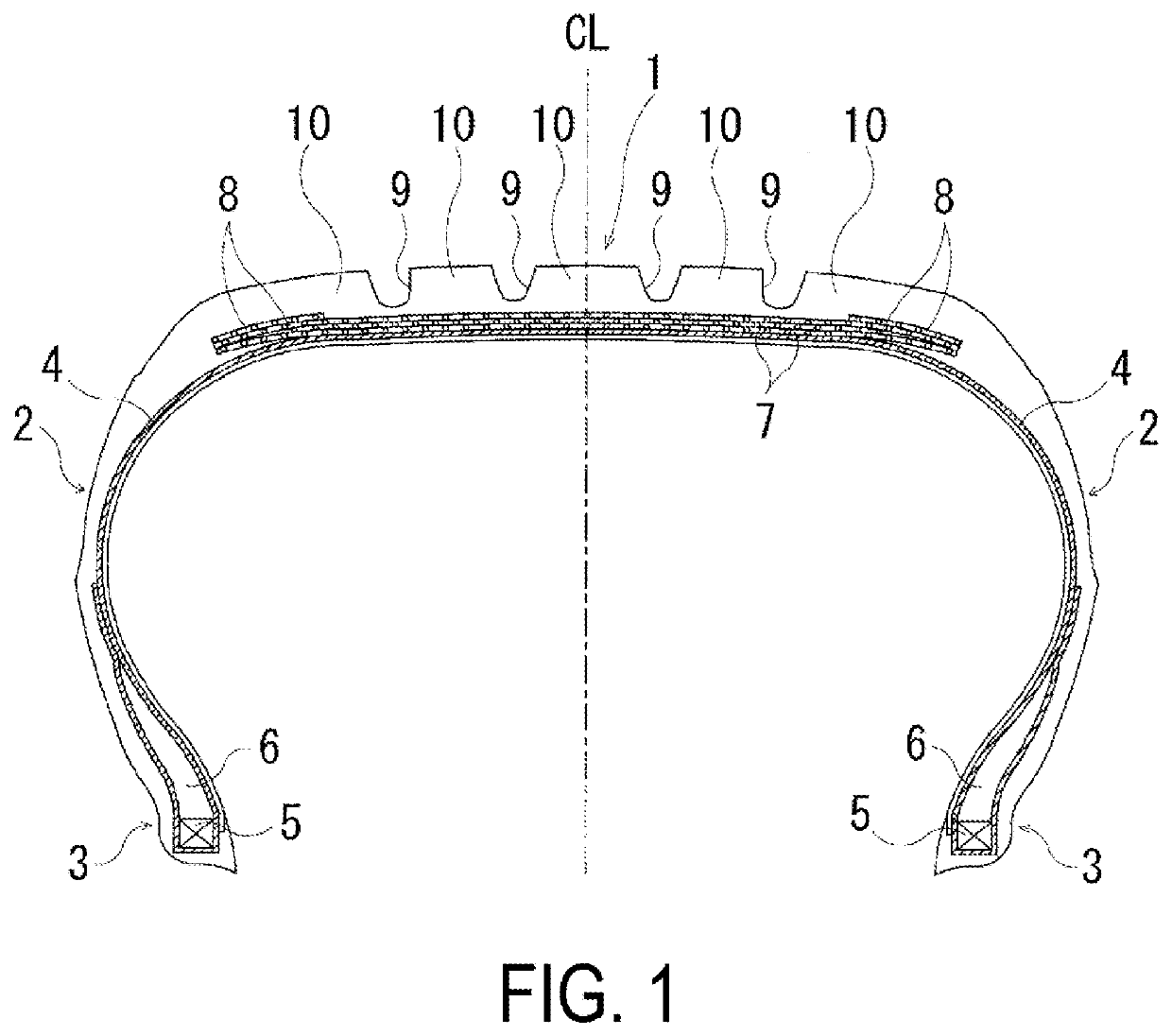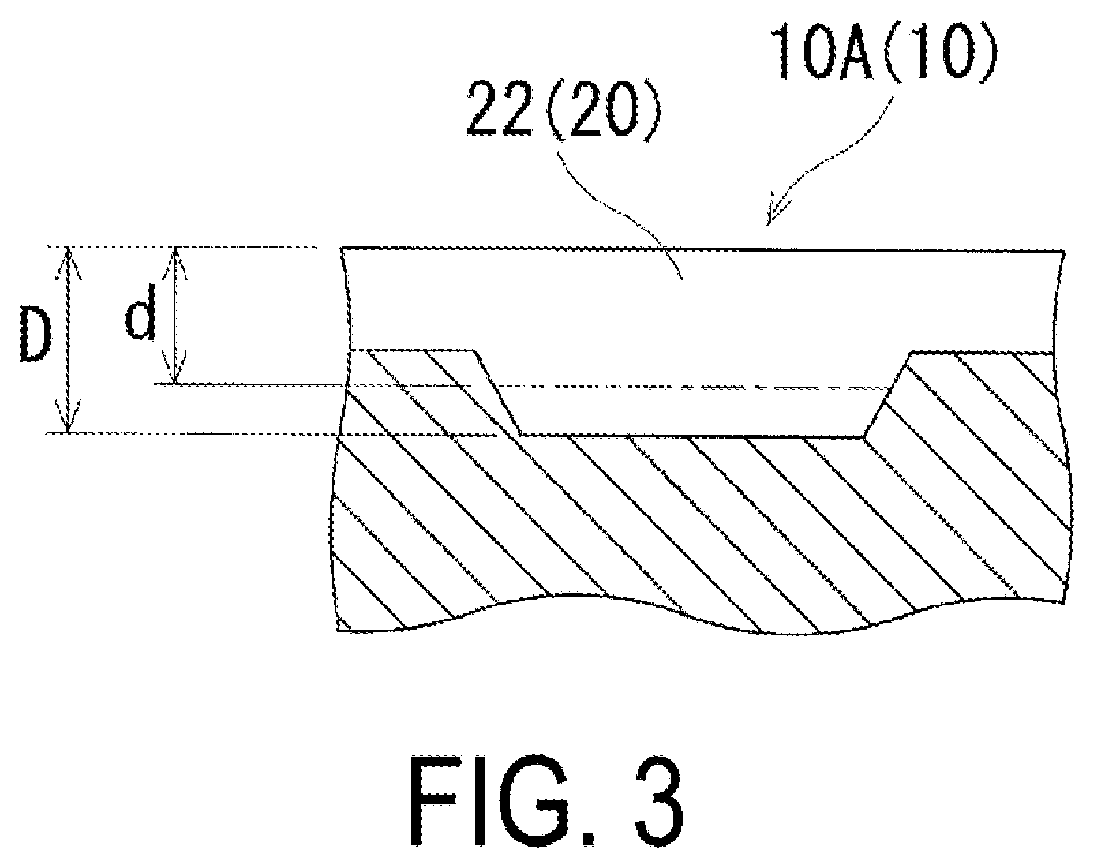Pneumatic tire
a pneumatic tire and rubber technology, applied in the field of pneumatic tires, can solve the problems of insufficient braking performance on wet road surfaces and snow-covered road surfaces based on sipes, poor appearance of vulcanized pneumatic tires, and tire appearance changes, so as to achieve effective enhancement of bonding between tire mold and tread rubber, and effective suppression of poor appearance
- Summary
- Abstract
- Description
- Claims
- Application Information
AI Technical Summary
Benefits of technology
Problems solved by technology
Method used
Image
Examples
example
[0034]In a pneumatic tire having a tire size of 205 / 55R16 that includes a plurality of circumferential grooves extending in a tire circumferential direction in a tread portion, a plurality of rows of land portions defined by the circumferential grooves, a plurality of sipes extending in a tire width direction in at least one row of the land portion, and the tread portion molded by a plurality of sectors divided in the tire circumferential direction, the presence of the sipe in a boundary region, the presence of a shallow bottom sipe, the range of the boundary region, the proportion of raised bottom of the shallow bottom sipe, the comparison of the number of the shallow bottom sipes in each land portion, the inclination angle θ of the sipe in the center land portion, the inclination angle θ of the sipe in the intermediate land portion, and the inclination angle θ of the sipe in the shoulder land portion were set as in Table 1, and tires of Conventional Example, Comparative Example, a...
PUM
 Login to View More
Login to View More Abstract
Description
Claims
Application Information
 Login to View More
Login to View More - R&D
- Intellectual Property
- Life Sciences
- Materials
- Tech Scout
- Unparalleled Data Quality
- Higher Quality Content
- 60% Fewer Hallucinations
Browse by: Latest US Patents, China's latest patents, Technical Efficacy Thesaurus, Application Domain, Technology Topic, Popular Technical Reports.
© 2025 PatSnap. All rights reserved.Legal|Privacy policy|Modern Slavery Act Transparency Statement|Sitemap|About US| Contact US: help@patsnap.com



